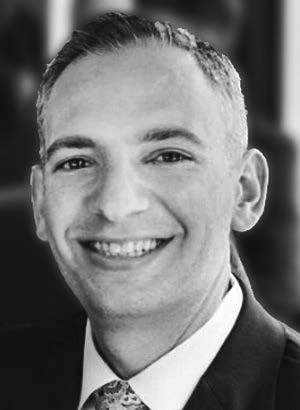Transitioning your money – and mindset – to retirement
The transition to retirement after years in the workplace, as welcome as it may be, can also be jolting and even downright daunting because of all the changes it brings to a person’s day-to-day lifestyle, state of mind and the handling of finances.
A key part of the shift into retirement is adjusting from a growth-focused approach to asset-management and investing toward an approach that recognizes that protecting assets from downside risk and volatility is as important as growing them, if not more so.
Successfully transitioning to retirement involves not only a shift in investing mindset, but also an actual shift in how assets are invested. And that may raise some potentially unsettling questions: Will the assets I’ve worked so hard to build last as long as I need them to? Are they adequately protected from potentially damaging swings in the financial markets? Will the sources I’m relying on for income provide enough to live the lifestyle I desire?
One way to find answers to these questions, and defuse some of the anxiety that often accompanies retirement, is by planning in advance for how to execute the shift from accumulation mode to a distribution or decumulation mode, where the focus is on balancing growth with protection to ensure an adequate amount of income throughout retirement.
Here’s a look at some of the key steps involved in the accumulation-to-distribution transition and planning process:
- Figure out the “when.” Financial professionals suggest starting the transition process five years before your projected retirement date. So an important first step for a person considering retirement is to pick a target retirement date.
- Adjust how assets are allocated to reflect changing risk tolerance. A person for whom retirement is looming has less time to recover from a sharp downturn in the value of their assets. For them, a sharp dip in asset value just prior to retirement can be particularly devastating, since they’ll be drawing from these assets for income during retirement. The less valuable their assets, the less its income-producing capability. So, to address this risk – in financial circles, it’s known as sequence of returns risk – it often makes sense for people whose assets are heavily weighted toward stocks to shift a portion of their money out of the stock market, into bonds and other more conservative fixed investments.
- Take steps to manage tax exposure. Because taxes can have a particularly negative impact on retirees living on a fixed income, financial experts recommend taking steps before and during retirement to manage and mitigate potential tax exposure. That can mean phasing in the reallocation of assets over a period of years to spread out potential capital-gains tax liabilities.
It also can mean taking steps to diversify assets in terms of their tax treatment. Distributions from pretax accounts such as a 401(k) or traditional IRA are taxed as ordinary income, unlike distributions from a Roth 401(k) and Roth IRA, which aren’t taxed. Converting a traditional IRA to a Roth IRA prior to retirement gives people access to a tax-free source of income. While they are likely to incur taxes on the conversion, gaining access to that tax-free income source later can make the move worthwhile.
- Build a cash reserve. Having access to a pool of readily available cash, stowed someplace like in a money market account or CD, is vital for retirees. Say a person is planning to sell investments from their stock portfolio to provide income during the early years of retirement, only to see the stock market – and the value of their portfolio – drop precipitously. Instead of being forced to sell stocks when their value is down, people with a substantial cash reserve can start drawing from that reserve for income while holding onto their stock investments – hopefully until they regain their value. They also can use money from that reserve to purchase stock-based investments when the price is relatively low. All this leads back to the fundamental “buy low, sell high” investing credo.
How much cash should you keep in reserve? Some financial professionals recommend stashing enough to cover one or two years’ worth of retirement income. Others suggest more, in case the stock market downturn lasts longer.
- Keep assets in the stock market. Equity investments such as stocks and stock-based funds can serve as the main growth engine of a portfolio, even in retirement. Indeed, with people living longer, they need their assets to keep growing so they last as long as they’re needed. Equities also are proven to help investors keep up with inflation, should that become more of a factor. So while it may make sense for a person heading toward retirement to move some assets out of the stock market, keeping a substantial chunk in equities is a good idea for many retirees.
- Review retirement accounts, including 401(k)s, 403(b)s and IRAs, with an eye toward potentially consolidating them to make eventual distributions (withdrawals) from these accounts easier to manage, and, perhaps, to reduce investment fees and costs, which can free up additional money.
- Take stock of income sources. It’s important to gain a clear picture of your retirement income well before retirement hits. That means looking at both the supply and demand sides of the equation: on the supply side, the sources you expect to provide income during retirement, how much they will supply, when they’ll supply it, for how long and in what form (lump sum or in a series of payments); on the demand side, projecting how much income you expect to need to cover your expenses and support your retirement lifestyle. This way, if there’s an apparent income shortfall, you can start addressing it now, before it becomes a pressing problem.
In the context of income planning, it’s also important to consider when to start taking Social Security benefits. People have options as to when they can begin drawing benefits – early, at age 62, at retirement age (65 to 67), or later, up until age 70. Waiting can substantially increase the monthly benefit a person receives.
- Revisit your asset mix and recalibrate, if necessary, to maintain an optimal allocation. As financial markets move, the percentages of stocks and bonds in your portfolio probably will fluctuate, sometimes substantially enough to warrant a process called rebalancing, which entails moving money out of one class of assets in the portfolio to another class. Financial professionals recommend revisiting asset allocation at least annually – and as circumstances dictate.
- Turn to a financial professional for guidance. The transition from the working world to retirement, and from accumulation mode to distribution mode, involves a variety of moving parts and a series of critical decisions. One misstep can prove costly, so consider enlisting the services of a financial planner to help make the transition as smooth as possible. To find one in your area, check out the Financial Planning Association’s searchable national database of personal finance experts, at www.PlannerSearch.org.
JASON E. SIPERSTEIN, CFA, CFP, is the president of the Financial Planning Association of Rhode Island and president of Eliot Rose Wealth Management. He can be reached by email, at jes@eliotrose.com.








